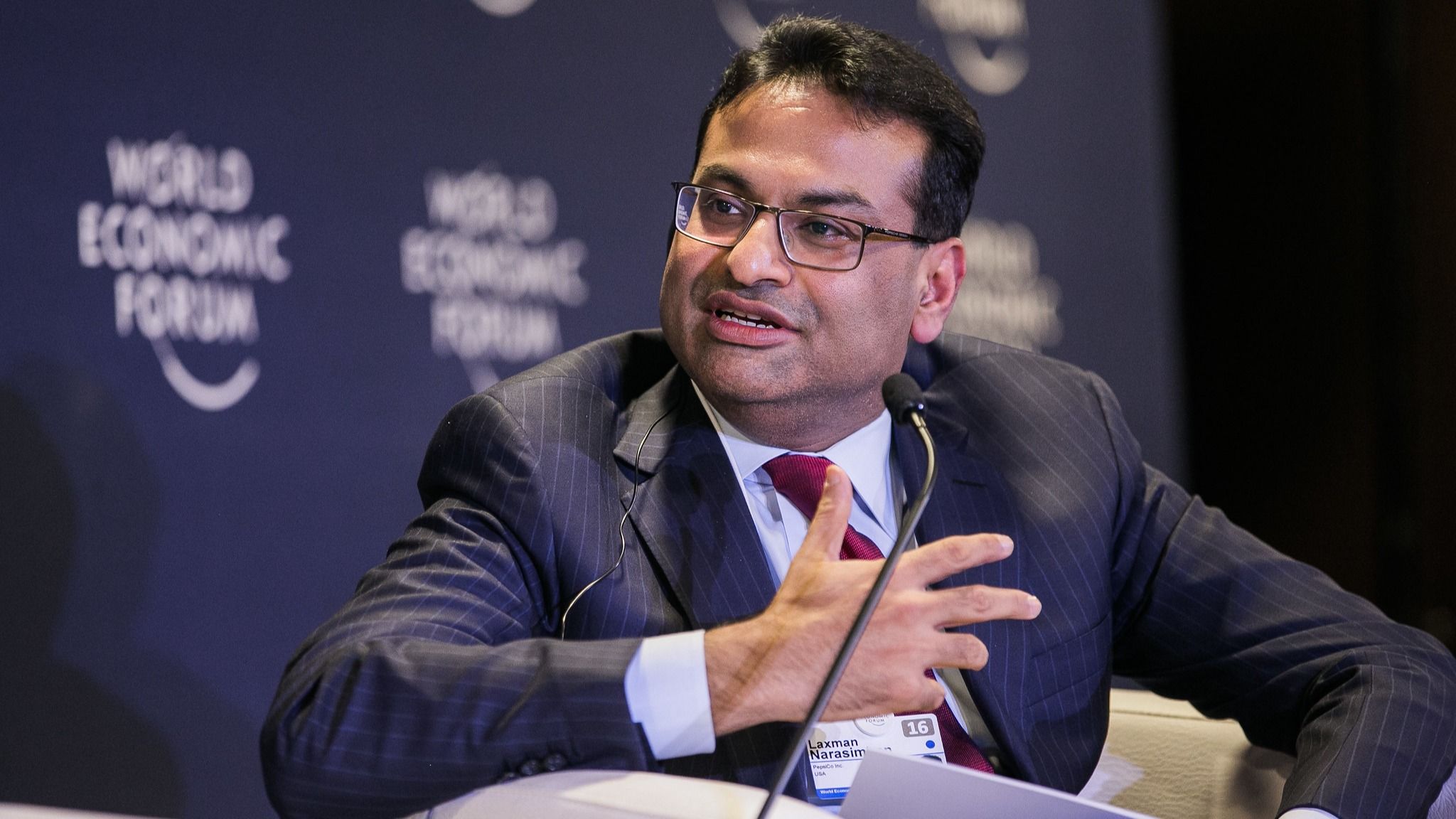Laxman Narasimhan’s Career Trajectory

Laxman Narasimhan’s career journey is a testament to his adaptability, strategic thinking, and ability to navigate complex business environments. From his early days in the consumer goods sector to his leadership in the healthcare industry, Narasimhan has consistently demonstrated a remarkable capacity for growth and transformation.
Experience Across Diverse Industries
Narasimhan’s career spans several industries, each offering unique challenges and opportunities for growth. This exposure has shaped his leadership style and approach to business, enabling him to effectively manage diverse teams and navigate complex global markets.
- Consumer Goods: Narasimhan began his career at PepsiCo, where he gained valuable experience in brand management, marketing, and sales. He played a key role in launching and growing several successful products, including Tropicana and Quaker Oats. His time at PepsiCo instilled in him a deep understanding of consumer behavior, brand building, and the importance of innovation in a competitive market.
- Healthcare: Narasimhan’s transition to the healthcare industry was a significant step, marking a shift from fast-moving consumer goods to a more complex and regulated sector. At Pfizer, he led the global consumer healthcare division, where he spearheaded strategic initiatives to enhance product development, marketing, and distribution. His experience at Pfizer exposed him to the intricacies of the healthcare landscape, including regulatory challenges, patient needs, and the evolving nature of the industry.
- Technology: Narasimhan’s move to the technology sector further diversified his experience, bringing him into contact with a dynamic and rapidly evolving industry. At Reckitt Benckiser, he led the global health, nutrition, and hygiene business, leveraging technology and data analytics to drive growth and efficiency. This experience provided him with valuable insights into the transformative power of technology in business, particularly in areas like digital marketing, supply chain management, and customer engagement.
Key Positions and Notable Achievements
Narasimhan’s career trajectory is marked by a series of key positions and notable achievements that highlight his leadership abilities and strategic acumen.
- PepsiCo: Narasimhan’s early years at PepsiCo were characterized by rapid advancement and significant contributions. He held various roles in marketing and sales, including leading the Quaker Oats business in North America. His achievements in this role included revitalizing the brand and driving sales growth through innovative marketing campaigns.
- Pfizer: As the Global President of Consumer Healthcare at Pfizer, Narasimhan oversaw a substantial business with a diverse portfolio of products. He led the integration of the Wyeth consumer healthcare business following Pfizer’s acquisition, successfully navigating a complex organizational transition. His efforts to streamline operations and optimize the product portfolio resulted in significant cost savings and improved profitability.
- Reckitt Benckiser: Narasimhan’s leadership at Reckitt Benckiser was marked by a focus on driving growth and transforming the business. He spearheaded the development and implementation of a new strategy that aimed to enhance the company’s global footprint, optimize its product portfolio, and leverage technology to drive innovation. His efforts resulted in significant revenue growth and market share gains for the company.
Leadership Style and Vision

Laxman Narasimhan’s leadership style is a blend of strategic thinking, operational excellence, and a deep understanding of consumer needs. He is known for his data-driven approach, collaborative leadership, and focus on driving sustainable growth. His vision for the future of business emphasizes innovation, digital transformation, and a commitment to building a more equitable and sustainable world.
Key Characteristics of Laxman Narasimhan’s Leadership Style
Laxman Narasimhan’s leadership style is characterized by a combination of strategic thinking, operational excellence, and a deep understanding of consumer needs. He is known for his data-driven approach, collaborative leadership, and focus on driving sustainable growth. These characteristics are evident in his leadership decisions and their impact on the organizations he has led.
Examples of Laxman Narasimhan’s Leadership Decisions and Their Impact on Organizations
Throughout his career, Laxman Narasimhan has consistently demonstrated his ability to drive growth and innovation.
- During his tenure as CEO of Reckitt Benckiser, Narasimhan led a major restructuring of the company, streamlining operations and focusing on core brands. This resulted in improved profitability and a more agile organization.
- He also spearheaded the company’s digital transformation, investing in e-commerce and data analytics. This initiative enabled Reckitt Benckiser to reach new consumers and better understand their needs.
Laxman Narasimhan’s Vision for the Future of Business
Laxman Narasimhan believes that the future of business lies in innovation, digital transformation, and a commitment to building a more equitable and sustainable world.
- He emphasizes the importance of embracing technology to create new products and services, and to improve customer experiences.
- He also believes that businesses have a responsibility to address social and environmental challenges.
How Laxman Narasimhan Plans to Achieve His Vision
Laxman Narasimhan’s approach to achieving his vision is characterized by a focus on building strong teams, fostering innovation, and embracing change.
- He believes that a diverse and inclusive workforce is essential for driving innovation and achieving success.
- He also emphasizes the importance of creating a culture of experimentation and learning, where employees are encouraged to take risks and try new things.
Impact on Starbucks

Laxman Narasimhan’s arrival at Starbucks marked a pivotal moment for the coffee giant, as the company faced several challenges that threatened its continued success. His leadership brought a fresh perspective and a strategic approach to addressing these issues.
Challenges Faced by Starbucks
Starbucks faced a number of challenges prior to Narasimhan’s appointment as CEO, including:
- Declining same-store sales: Starbucks experienced a decline in sales at its existing stores, indicating a slowdown in customer growth and potential dissatisfaction.
- Increased competition: The coffee market became increasingly competitive, with new entrants and established players vying for market share.
- Employee morale issues: Starbucks faced challenges related to employee morale, including concerns about wages, benefits, and working conditions.
- Digital transformation: Starbucks needed to adapt to the evolving digital landscape and enhance its online ordering and delivery capabilities.
Initial Strategies and Their Impact
Narasimhan’s initial strategies focused on addressing these challenges and revitalizing Starbucks’ core business.
- Customer-centric approach: Narasimhan emphasized a customer-centric approach, prioritizing customer experience and satisfaction. This involved enhancing store design, introducing new menu items, and improving the overall customer journey.
- Operational efficiency: He focused on improving operational efficiency by streamlining processes, optimizing supply chains, and enhancing technology.
- Employee engagement: Narasimhan recognized the importance of employee engagement and implemented initiatives to improve wages, benefits, and training programs.
- Digital innovation: He invested heavily in digital innovation, expanding Starbucks’ mobile ordering and delivery capabilities, and enhancing its loyalty program.
Impact on Performance, Customer Satisfaction, and Employee Morale
Narasimhan’s leadership has had a positive impact on Starbucks’ performance, customer satisfaction, and employee morale.
- Improved financial performance: Starbucks has seen improved financial performance under Narasimhan’s leadership, with increased revenue and profitability.
- Enhanced customer satisfaction: Customer satisfaction has improved, with positive feedback on the enhanced customer experience and new offerings.
- Boosted employee morale: Employee morale has improved, with a greater sense of purpose and appreciation for their contributions.
Laxman Narasimhan, the new CEO of Starbucks, is facing a challenging landscape as he navigates the company’s future. One of the key areas he’ll need to address is the evolving customer landscape, where companies like Starbucks and Chipotle are competing for the same customer base.
Narasimhan’s success will depend on his ability to understand these shifts and adapt Starbucks’ strategy accordingly.
Laxman Narasimhan, the current CEO of Starbucks, has a background in consumer packaged goods and has been known for his strategic approach to growth. His experience with brands like PepsiCo and his focus on digital innovation may offer valuable insights for understanding the performance of companies like Chipotle, a popular fast-casual restaurant chain.
If you’re interested in exploring the growth and performance of chipotle stock , you’ll find that its trajectory is influenced by a variety of factors, including consumer preferences, competition, and economic conditions. It will be interesting to see how Narasimhan’s leadership style and experience will shape Starbucks’ future and whether he will implement similar strategies at the company.